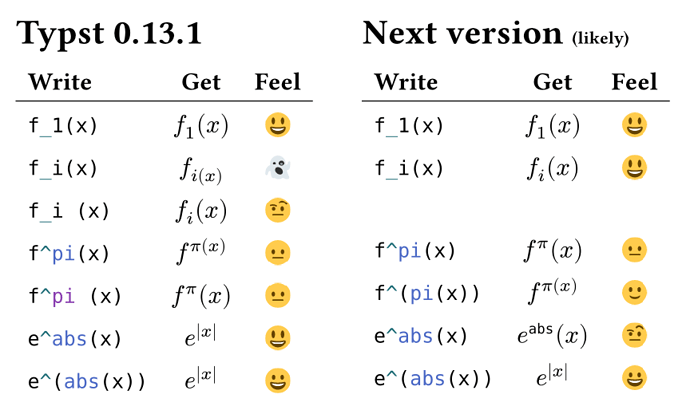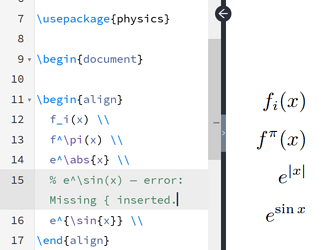We are planning to make changes to operator precedence in math mode: Specifically, with this change something like f_i(x) or f_pi(x) would not put the parenthesized part into the subscript anymore. In exchange, f_abs(x) would need to be written as f_(abs(x)) because there is an inherent syntactical ambiguity.
A range of other options have been explored. I summarized all of them and explained my own thoughts in more detail in this blog post: The Math Mode Problem | Laurenz's Blog.
If you are using Typst’s math mode, I encourage you to read the blog post and if you have an opinion one or the other way to comment on this thread. This way, we can get a better idea of what users of Typst think about this and make a more informed decision. Thank you!
Here are a few links to further places where this is discussed: GitHub PR, Discord Forge Thread, Reddit.

